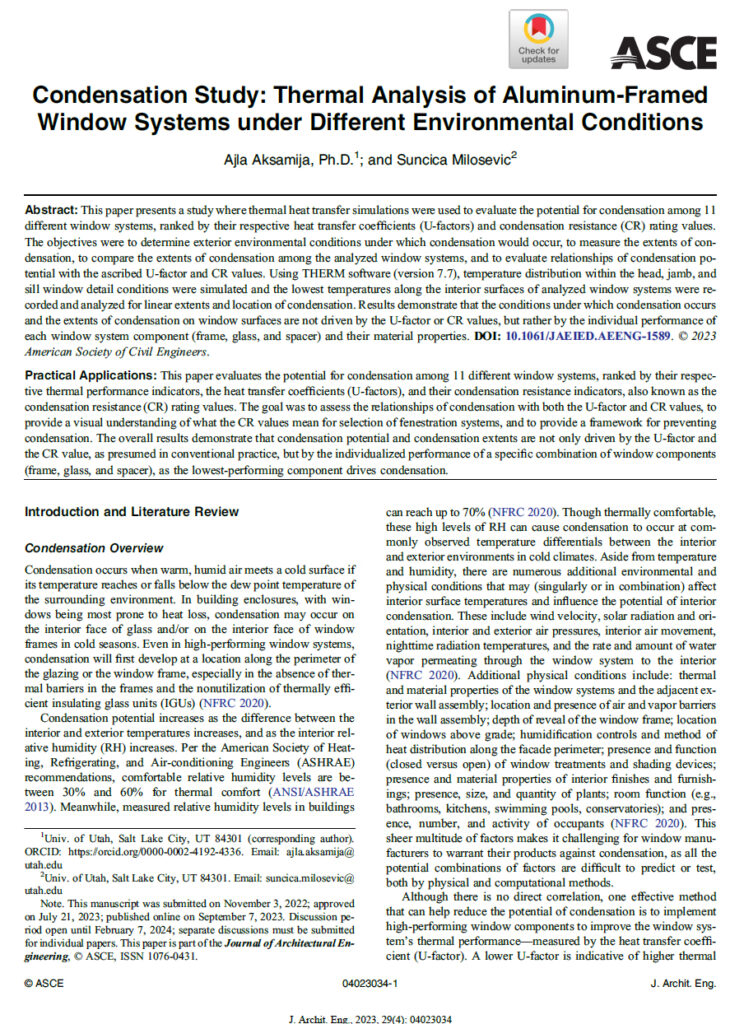
“Condensation Study: Thermal Analysis of Aluminum-Framed Window Systems under Different Environmental Conditions” presents a study where thermal heat transfer simulations were used to evaluate the potential for condensation among 11 different window systems, ranked by their respective heat transfer coefficients (U-factors) and condensation resistance (CR) rating values. The objectives were to determine exterior environmental conditions under which condensation would occur, to measure the extents of condensation, to compare the extents of condensation among the analyzed window systems, and to evaluate relationships of condensation potential with the ascribed U-factor and CR values. Using THERM software (version 7.7), temperature distribution within the head, jamb, and sill window detail conditions were simulated and the lowest temperatures along the interior surfaces of analyzed window systems were recorded and analyzed for linear extents and location of condensation. Results demonstrate that the conditions under which condensation occurs and the extents of condensation on window surfaces are not driven by the U-factor or CR values, but rather by the individual performance of each window system component (frame, glass, and spacer) and their material properties.
Citation:
Aksamija, A., and Milosevic, S., (2023). “Condensation Study: Thermal Analysis of Aluminum-Framed Window Systems under Different Environmental Conditions”, Journal of Architectural Engineering, Vol. 29, No. 4, DOI: 10.1061/JAEIED/AEENG-1589.
